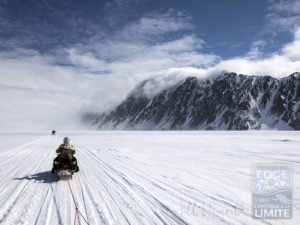Shooting the dancing colors of the northern lights is often a part of a trip of a lifetime. It is critical to have the right gear and settings to capture the stunning visuals to share with your friends.
- Bring a high-quality tripod capable of stabilization for a 10-20 second exposure. Carbon fiber is lighter and easier to handle than metal.
- Your camera should be capable of working in Manual Mode so that you can control aperture, ISO, and shutter speed.
- Check the aurora forecast for your area to determine if and when they might peak. The aurora activity is described with a “KP-Index,” ranging from 0-9. You need at least a “2” to see any action, and “5” is considered a real storm. Search the term “space weather” or “aurora forecast” for many sites offering information and maps. The NOAA POES Auroral Activity Website is particularly useful.
- Test your composition in the daytime if you can. If not, at least test the tripod and input all your camera settings before you head out into the weather.
- Set focus to infinity. Make any manual focus adjustments and then leave the auto-focus OFF.
- If your best focus is not at the very end of the lens, use a silver Sharpie marker to mark the barrel of the lens.
- Bring a headlamp with you so that you can see your camera settings and move safely on the ice.
- Shoot in a RAW format.
- Shoot in “Kelvin” white balance between color temperatures of 2800 and 4000.
- Use f2.8 for the aperture (up to 4.0 max). A wide aperture permits the most amount of light into the sensor in the least amount of time, which allows for the lowest ISO and least amount of color noise.
- Use a shutter speed of 5-25 seconds. Ambient light, snow cover, and moon phase will affect the overall brightness.
- If the aurora is moving quickly, try for a 5-7 second exposure and move to longer shots for slower-moving northern lights.
- Start with 400-800 ISO. Incrementally increase ISO to 1200 or higher as needed, but recognize that higher ISO will net more color noise. Some cameras are better than others at low light photography. If buying a camera for this purpose, check out these specifications.
- Advanced shooters should watch the color histogram in the green channel. It is easy to overexpose the green channel in addition to overall luminance.
- Protect yourself against the cold, wearing hefty layers since you will be stationary for long periods while shooting. Your feet, face, and hands are especially vulnerable, so plan accordingly.
